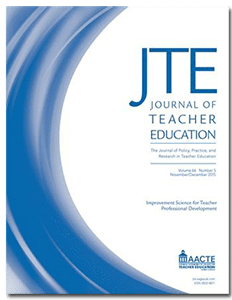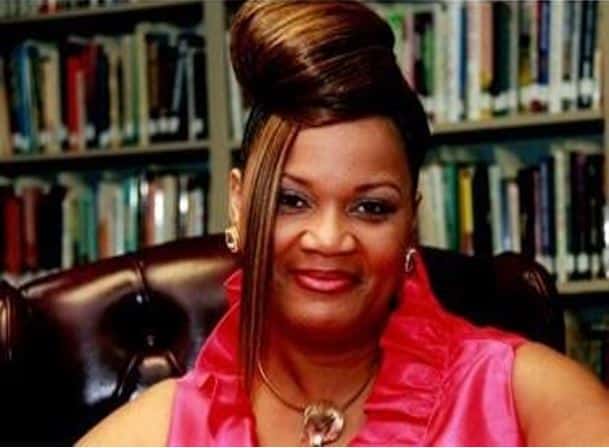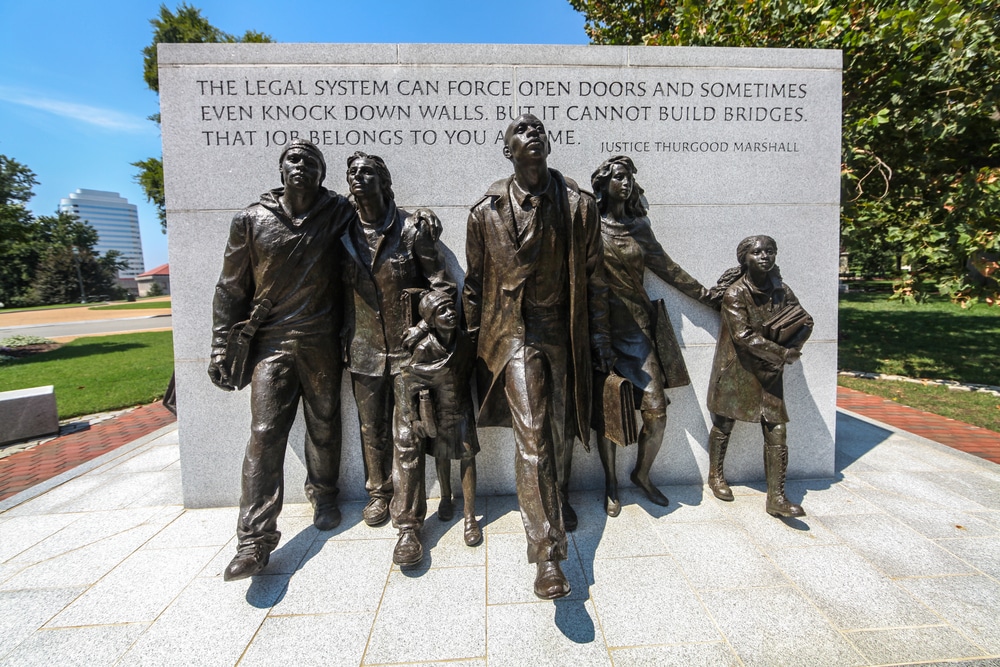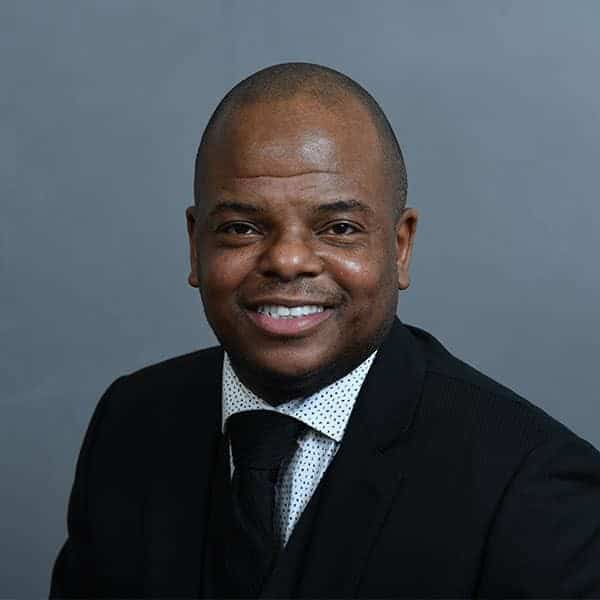23 Oct2020
By JTE
 Check out a recent JTE Insider blog interview by the Journal of Teacher Education (JTE) editorial team. This blog is available to the public, and AACTE members have free access to the articles in the JTE online archives—just log in with your AACTE profile.
Check out a recent JTE Insider blog interview by the Journal of Teacher Education (JTE) editorial team. This blog is available to the public, and AACTE members have free access to the articles in the JTE online archives—just log in with your AACTE profile.
This interview features insights on the article entitled, “Rethinking High-Leverage Practices in Justice-Oriented Ways” by Angela Calabrese Barton, Edna Tan, and Daniel J. Birmingham. The article was published in the September/October 2020 issue of the Journal of Teacher Education.
Article Abstract: Justice-oriented teaching must address how classroom-based disciplinary learning is shaped by interactions among local practice and systems of privilege and oppression. Our work advances current scholarship on high-leverage practices [HLPs] by emphasizing the need for teaching practices that restructure power relations in classrooms and their intersections with historicized injustice in local practice as a part of disciplinary learning. Drawing upon a critical justice stance, and long-term collaborative work with middle school teachers and youth, we report on empirically driven insights into patterns-in-practice in teaching which yield insight into both what justice-oriented high-leverage practices may be, and the cross-cutting ideals which undergird them. We discuss the patterns-in-practice and their implications for teaching and learning across subject areas: HLPs that work toward equitable and consequential ends need to be understood in terms of the practice itself and its individual and collective impact on classroom life.
20 Oct2020
By Robin Chenoweth
The following article is an excerpt from Inspire Magazine and is reprinted with permission.
 After schools shut down in March due to COVID-19, teacher Sarah Thornburg and her team tackled remote teaching with gusto.
After schools shut down in March due to COVID-19, teacher Sarah Thornburg and her team tackled remote teaching with gusto.
“We were like, ‘Let’s go.’ We found out, not only could we not teach the way that we wanted, but we shouldn’t,” the Columbus, Ohio, teacher said. “Everything had to slow down and focus not on content but on (students’) mental well-being.”
Some high-schoolers doubled work hours to pay bills. Some feared they would expose grandparents to the virus. Families lost businesses.
“That’s a burden that’s incredible for anybody to have, much less for a 15-year-old to deal with,” Thornburg said. “You can’t teach a child who’s completely freaking out about, ‘Are we going to lose our home?’ That was eye-opening.”
13 Oct2020
By John Blackwell
This article is a personal reflection of the 2020 Washington Week State Leaders Institute by attendee John Blackwell.
 As academics who value valid evidence and scientifically proven knowledge, we know that, concerning human beings, there is only one race—the human race. We have lived our entire lives knowing that race is one of the most divisive topics you could ever introduce in any conversation or classroom. Robin DiAngelo, in her book, ‘White Fragility’: Why It’s So Hard for White People to Talk about Racism, explains so clearly the idea of race was created, “as an evolving social idea that was created to legitimize racial inequality and protect white advantage.” Despite this knowledge, the term racism has been weaponized to condemn anyone who uses it. When having discussion about racism, it is difficult for one to see beyond their emotion to get to the actual facts.
As academics who value valid evidence and scientifically proven knowledge, we know that, concerning human beings, there is only one race—the human race. We have lived our entire lives knowing that race is one of the most divisive topics you could ever introduce in any conversation or classroom. Robin DiAngelo, in her book, ‘White Fragility’: Why It’s So Hard for White People to Talk about Racism, explains so clearly the idea of race was created, “as an evolving social idea that was created to legitimize racial inequality and protect white advantage.” Despite this knowledge, the term racism has been weaponized to condemn anyone who uses it. When having discussion about racism, it is difficult for one to see beyond their emotion to get to the actual facts.
21 Sep2020
By Jane E. West

This blog post is written by AACTE consultant Jane West and is intended to provide updated information. The views expressed in this post do not necessarily reflect the views of AACTE.
Congress Looks to Avoid Government Shutdown after Failing to Move COVID Relief Bill
Remember your students who waited until the last minute to turn in their assignments? Well, they are all Members of Congress now! Congress will walk right up to the September 30 deadline before passing a short-term measure that will avoid a government shutdown and keep federal funding flowing. Called a “Continuing Resolution”—or CR—the bill will be a “simple extension” to continue current levels of funding for the time being. The White House, Senate and House leadership agree that this must be passed by the deadline and a shutdown must be avoided.
Two outstanding questions remain. The first is: What will the expiration date be for the CR? The answer is anywhere between mid-December and March.
The second outstanding question is what will and will not be attached to the CR? While all parties are agreeing on a “clean” CR—meaning no “poison pill” amendments—there are always what are known in Washington-speak as “anomalies.” These are friendly changes to law, which are not supposed to be controversial. Of course, ensuring that all parties agree that something is not controversial can be a challenge. Given that passage of a COVID relief bill failed to make progress last week, there will be pressure to add COVID-related provisions to this bill. Most anticipate that there will be no further action on a COVID relief bill until after the election in November. Stay tuned for some action on the CR next week.
17 Sep2020
By Angeline Dean
This article is a personal reflection of the 2020 Washington Week Holmes Policy Institute by attendee Angeline Dean.

“People, Policy, Politics, and Processes” – Jane West
The knowledge of this framework and its relation to analysis and advocacy spearheaded the Holmes Advanced Policy Course. This framework, along with homework given by AACTE staffers Jane West and Weade James was not only the necessary grounding to an understanding that truly “all politics are local” but also ripe for Luis Maldonado to address the navigating of politics and policies. Immediately following, Lakeisha Steele, professional staffer and policy team leader for Rep. Bobby Scott (D-VA), chair of the House, Education & Labor Committee, “ripped the runway” with her honesty, passion, and commitment to social and transformational change! She reminded us that “we are our ancestors wildest dreams!” Therefore, we like our ancestors and so many who have transitioned this year, must be prepared to live in “good trouble” spaces and we must Persevere.
“If they don’t give you a seat at the table, bring a folding chair” – Shirley Chisolm.
As we segued into the rest of the Holmes Policy Institute, we were gifted with the Power statement of “Miss Unbought and Unbossed” herself, Shirley Chisolm. How befitting as this statement resonated as an overarching theme for such a time as this. AACTE Dean in Residence Leslie Fenwick challenged us to thwart the narratives that brand Black bodies in lies and deficits. She pushed us to exercise our Positionality as spaces of truth, resistance, power, and countered narratives that honor civil rights ancestors in the proper telling of history and data in education. With that, students posed questions that blended and asserted their politics, processes, power, and positionality as people such as: What exactly is the role of a dean in residence and how or does it relate to Holmes students and their needs? What systems are in place to protect (another p word) BIPOC students against whiteness and internalized racism in predominantly white institutions?
11 Sep2020
By Marleen C. Pugach
This article is an excerpt that originally appeared in the AACTE Journal of Teacher Education (JTE) and is co-authored by Marleen C. Pugach, Ananya M. Matewos, and Joyce Gomez-Najarro. AACTE members have free access to the articles in the JTE online archives—log in with your AACTE profile to read the full article.
Preparing teachers for social justice has long been a driving force within teacher education, reflecting a commitment to educating students from multiple social identity groups who are marginalized and oppressed in schools. Given any particular decade, specific social identity markers may take center stage in this work—with new markers gaining visibility as previously neglected identity groups begin to receive vital, much needed attention.
Alongside social justice concerns for equity regarding race, class, ethnicity, gender, language, socioeconomic status and, more recently, sexual orientation and religion, stands the question of disability. As part of the overall vision for social justice, disability is generally viewed as a key social marker of identity. Yet students with disabilities continue to be marginalized and have persistently lower academic outcomes, such as graduation rates, compared to their mainstream peers (U.S. Department of Education, 2015). The connection between social justice and disability was amplified with the emergence of the disability studies in education (DSE) movement in the 1990s, which views disability as a socially constructed phenomenon, shifting its historical definition away from an immutable individual characteristic (Baglieri et al., 2011). Furthermore, the inclusion of students with disabilities itself has long been viewed as a social justice issue (Artiles et al., 2006).
04 Sep2020
By Debra Cano Ramos
This article originally appeared on the California State University, Fullerton new site and is reprinted with permission.
California State Fullerton’s College of Education faculty members are rising up to promote anti-racist teaching and learning.
In response to African Americans killed by police across the country and the disproportionate rate of COVID-19 infections among Black and Latinx communities, the Department of Secondary Education is offering a free webinar series this fall semester to address underlying racist policies and practices that exist in schools, said Natalie Tran, chair of secondary education and professor of educational leadership.
The webinars, open to teachers, teacher candidates, faculty, and community members, focus on dismantling racist policies, practices and ideas that influence schools, teachers and children, and most importantly, on taking actions that address anti-racist teaching.
13 Jul2020
By Lynn M. Gangone
 We live in a society that is rapidly changing. The worldwide pandemic has shown us the harsh, but important, reality that divisiveness, inequality, and discrimination persist in our country. The murders of George Floyd, Ahmaud Arbery, Breonna Taylor, and too many others are stark evidence that racism still has deep and seemingly impenetrable roots in our country. This profound moment in time has brought despair to and heightened protest not only within the Black American community, but to people of all races throughout our country and the world. While addressing and rectifying these injustices requires the concerted effort of all American citizens, educators play an essential role in creating and ensuring an equitable existence for everyone.
We live in a society that is rapidly changing. The worldwide pandemic has shown us the harsh, but important, reality that divisiveness, inequality, and discrimination persist in our country. The murders of George Floyd, Ahmaud Arbery, Breonna Taylor, and too many others are stark evidence that racism still has deep and seemingly impenetrable roots in our country. This profound moment in time has brought despair to and heightened protest not only within the Black American community, but to people of all races throughout our country and the world. While addressing and rectifying these injustices requires the concerted effort of all American citizens, educators play an essential role in creating and ensuring an equitable existence for everyone.
Throughout our nation’s history, education has been pivotal in fostering citizenry. Abolitionist leaders understood the importance of a quality public education in promoting democracy. William Lloyd Garrison called for “a broader basis for government which includes all the people, with all their rights in their hands, and with an equal power to maintain their rights.” Wendell Phillips insisted that knowledge was given to impart upon others. Harriet Tubman instilled within us that “every great dream begins with a dreamer.” And Frederick Douglass wrote that “once you have learned to read, you will be forever free.”
26 Jun2020
By Rodney Robinson
This article originally appeared on Rodney Robinson’s blog and is reprinted with permission.
Yesterday, I woke up to a country and a city in crisis. I had text messages from former students who are now in their late 20’s looking for guidance and advice. Teachers who are close friends and some strangers have asked for my advice on what they should be doing. I did my best to calm their fears and try to help them channel their anger, anxiety, and aggression into a more impactful way but soon became overwhelmed at the sheer hopelessness of the situation. Like everyone, I’ve been sulking and processing the events of the past week.
Politicians, the media, and pundits love to use the term systemic racism to describe what is going on to generalize the problems of being black in America. While this is true, we must address the causes of systemic racism and not allow them to generalize and describe the system they are complicit in maintaining. We must push them to make systemic racism more than a buzzword. We must push them to define systemic racism and demand solutions that provide actionable change and implementation which most aren’t willing to do because they must sacrifice their comfort and position.
Peaceful protests and uprisings are not inspired just from the frustration of a lynched unarmed Black man. This is the frustration that comes from an inherently racist society that was built to subjugate Black people. According to Ta-Nehisi Coates, the “destruction is merely the superlative form of a dominion whose prerogatives include frisking, detainings, beatings, and humiliations.” It also comes from lack of safe, affordable neighborhoods, an education system that punishes black and brown boys and girls at rates 3-4 times higher than white kids, and a criminal system that stalks and preys on black bodies limiting their opportunities for physical and financial freedom.
25 Jun2020
By Leslie T. Fenwick

This essay is excerpted from Leslie T. Fenwick’s forthcoming book, Jim Crow’s Pink Slip: Public Policy and the Near-Decimation of Black School Leadership after Brown. The excerpt provides a brief history about how many public schools came to be named for confederates and racist politicians who fought against integration and illegally resisted the Brown decision.
In 1954, the Brown v. Board of Education legal decision proclaimed that segregation had no place in America’s public schools. With this new law of the land and ensuing federal pressure to desegregate, school districts in 17 dual system states complied by closing black schools and firing, demoting and dismissing legions of exceptionally credentialed black principals and teachers. At the time, closing black schools was the primary method for ridding the system of black principals and teachers most of whom were better credentialed than their white peers. Directly after Brown there was little displacement of black principals and teachers, but as Title VI compliance mandates increased, the National Education Association (NEA) received reports from black teachers’ associations indicating that displacements were increasing.
In late 1969, C. J. Duckworth who served as executive secretary to the Mississippi Teachers Association clarified the link between black school closures and black principal firing and demotions in 17 Mississippi school districts. In his report to the NEA, he wrote:
Alcorn County – the black high school reduced to a junior high school and the black principal demoted to a federal projects coordinators; Clarke County – the black high school reduced to a junior high school and the principal made an elementary principal for remainder of the year, after which he was to be terminated; Clay County – the black high school reduced to a junior high school with a white principal; ….Franklin County – a black elementary principal replaced by a white principal; Hancock County – the black high school phased out and only two of 10 black teachers remain; Harrison County – a black junior-senior high school eliminated and the black principal made supervisor of a material center;….Itawamba County – all black schools and principals eliminated; ….Prentiss County – black high schools and principals phased out; ….Marion County – black high school principals replaced with whites…. (p. 5332)
25 Jun2020
By AACTE

AACTE celebrates the recent rulings of the Supreme Court of the United States (SCOTUS) in support of the LGBTQ community and the Deferred Action for Childhood Arrivals (DACA) program. AACTE commends the two decisions and their significant impact for growing a diversified educator workforce prepared by AACTE member institutions to meet the needs of diverse learners.
For the first time in American schools, LGBTQ teachers will not fear the loss of employment when self-identifying thanks to the SCOTUS June 15 ruling. It affirms the 1964 Civil Rights Act protects gay, lesbian, and transgender employees from discrimination based on sex. AACTE believes representation of LGBTQ educators in schools is vital to the mental and physical health of LGBTQ students, particularly Black transgender youth. The SCOTUS decision will increase the visibility of gender diverse teachers on all levels of the education system and will help students gain a deeper understanding about the LGBTQ community.
22 Jun2020
By Jacob Easley II
 This article originally appeared on the Graduate School of Education at Touro College website and is reprinted with permission.
This article originally appeared on the Graduate School of Education at Touro College website and is reprinted with permission.
To the Touro GSE community, our candidates, and in particular, the youth and children we serve by way of our educator preparation programs, I write to you in solidarity with the many educators across the United States who collectively speak out against the horrific brutality and the death of George Floyd and many others. The world is watching. These are indeed troubling times coupled with the COVID-19 pandemic.
Our president of Touro College and University System, Dr. Alan Kadish has led the charge for those of us within the Touro academy to “Be part of the solution.” To our Black and brown youth, our first desire is your safety and to let you know you are valued. This too we hold dear for all communities of color. Yet, desires without actions are delusions. We must also move beyond rhetoric and engage the tools of professional educators. This we must and will continue to do as researchers, practitioners, and advocates focusing on educational equity.
18 Jun2020
By Chris Godwin
 The Executive Board of NCACTE grieves with the nation and joins in solidarity with our black brothers and sisters during this tragic period in our nation’s history. Systemic racism stole the lives of George Floyd, Rayshard Brooks, Ahmaud Arbery, Breonna Taylor, Eric Garner, Trayvon Martin, Michael Brown, and many more that are not named here. As teacher educators, we believe Black Lives Matter and we see the impact of racism in both our K-12 schools, colleges and universities. As a body, we agree students in our schools need and deserve antiracist teachers as well as teachers who are mirrors for themselves. This statement is our initial commitment to action, which will begin months and years of work ahead. We are also committed to finding the right people to lead this work for and with us.
The Executive Board of NCACTE grieves with the nation and joins in solidarity with our black brothers and sisters during this tragic period in our nation’s history. Systemic racism stole the lives of George Floyd, Rayshard Brooks, Ahmaud Arbery, Breonna Taylor, Eric Garner, Trayvon Martin, Michael Brown, and many more that are not named here. As teacher educators, we believe Black Lives Matter and we see the impact of racism in both our K-12 schools, colleges and universities. As a body, we agree students in our schools need and deserve antiracist teachers as well as teachers who are mirrors for themselves. This statement is our initial commitment to action, which will begin months and years of work ahead. We are also committed to finding the right people to lead this work for and with us.
Each moment defines us, and this moment calls us to stand up and call for justice. As Dr. Pamela Senegal, President of Piedmont Community College states, “The fact of the matter is this in the United States—race still matters far too much in nearly every aspect of living. Housing. Credit. Education. Prison. Jail. Health.”
18 Jun2020
By Andrew Daire
This article originally appeared on the School of Education at Virginia Commonwealth University website and is reprinted with permission.
 The VCU School of Education wishes to express our solidarity with the recent anti-racist protests and efforts to eradicate structural and systemic racism that began after the brutal murder of George Floyd in Minneapolis by police officers. His murder is not just a recent upsetting event, as so many other incidents come to mind: Amy Cooper in New York calling the police with false allegations regarding a black man; Ahmad Aubrey who was shot to death by Gregory and Travis McMichael; Breonna Taylor who was killed by police raiding her home; Eric Garner, and on and on and on. These incidents, and many more, are part of a pattern of ongoing, systemic, racist behavior against black people in this country since the beginning of slavery. Additionally, efforts to eradicate structural and systemic racism must continue. The grief that people of color are experiencing goes well beyond these recent events but is historical grief, exacerbated by these events.
The VCU School of Education wishes to express our solidarity with the recent anti-racist protests and efforts to eradicate structural and systemic racism that began after the brutal murder of George Floyd in Minneapolis by police officers. His murder is not just a recent upsetting event, as so many other incidents come to mind: Amy Cooper in New York calling the police with false allegations regarding a black man; Ahmad Aubrey who was shot to death by Gregory and Travis McMichael; Breonna Taylor who was killed by police raiding her home; Eric Garner, and on and on and on. These incidents, and many more, are part of a pattern of ongoing, systemic, racist behavior against black people in this country since the beginning of slavery. Additionally, efforts to eradicate structural and systemic racism must continue. The grief that people of color are experiencing goes well beyond these recent events but is historical grief, exacerbated by these events.
We will support this movement with not just words, but actions.
16 Jun2020
By Jane E. West
 This blog post is written by AACTE consultant Jane West and is intended to provide updated information. The views expressed in this post do not necessarily reflect the views of AACTE.
This blog post is written by AACTE consultant Jane West and is intended to provide updated information. The views expressed in this post do not necessarily reflect the views of AACTE.
Police Reform in the Wake of George Floyd’s Death: Is it Coming? How Will it Affect Schools?
The purview of state and local government police reform is rapidly moving into the realm of the federal government. House Democrats have acted quickly, introducing a sweeping bill, the Justice in Policing Act of 2020 with 200 sponsors. Republicans in both the House and Senate are feeling the pressure and discussions are underway, albeit for a far more limited approach. The White House is sending mixed messages, on the one hand calling for reform and on the other, calling for law and order.
Sen. Tim Scott (R-SC) is taking the lead for Republicans in the Senate and has been in conversation with the White House. Rep. Jim Jordan (R-OH), a top Trump ally in the House, said he will release his own plan shortly. Senate proposals appear to feature the improvement of federal data collection on the use of force and no-knock warrants as well as police training. White House spokespersons said that ending qualified immunity, which protects police officers from civil lawsuits, was a nonstarter.
 Check out a recent JTE Insider blog interview by the Journal of Teacher Education (JTE) editorial team. This blog is available to the public, and AACTE members have free access to the articles in the JTE online archives—just log in with your AACTE profile.
Check out a recent JTE Insider blog interview by the Journal of Teacher Education (JTE) editorial team. This blog is available to the public, and AACTE members have free access to the articles in the JTE online archives—just log in with your AACTE profile.






 After schools shut down in March due to COVID-19, teacher Sarah Thornburg and her team tackled remote teaching with gusto.
After schools shut down in March due to COVID-19, teacher Sarah Thornburg and her team tackled remote teaching with gusto. As academics who value valid evidence and scientifically proven knowledge, we know that, concerning human beings, there is only one race—the human race. We have lived our entire lives knowing that race is one of the most divisive topics you could ever introduce in any conversation or classroom. Robin DiAngelo, in her book, ‘White Fragility’: Why It’s So Hard for White People to Talk about Racism, explains so clearly the idea of race was created, “as an evolving social idea that was created to legitimize racial inequality and protect white advantage.” Despite this knowledge, the term racism has been weaponized to condemn anyone who uses it. When having discussion about racism, it is difficult for one to see beyond their emotion to get to the actual facts.
As academics who value valid evidence and scientifically proven knowledge, we know that, concerning human beings, there is only one race—the human race. We have lived our entire lives knowing that race is one of the most divisive topics you could ever introduce in any conversation or classroom. Robin DiAngelo, in her book, ‘White Fragility’: Why It’s So Hard for White People to Talk about Racism, explains so clearly the idea of race was created, “as an evolving social idea that was created to legitimize racial inequality and protect white advantage.” Despite this knowledge, the term racism has been weaponized to condemn anyone who uses it. When having discussion about racism, it is difficult for one to see beyond their emotion to get to the actual facts.

 We live in a society that is rapidly changing. The worldwide pandemic has shown us the harsh, but important, reality that divisiveness, inequality, and discrimination persist in our country. The murders of George Floyd, Ahmaud Arbery, Breonna Taylor, and too many others are stark evidence that racism still has deep and seemingly impenetrable roots in our country. This profound moment in time has brought despair to and heightened protest not only within the Black American community, but to people of all races throughout our country and the world. While addressing and rectifying these injustices requires the concerted effort of all American citizens, educators play an essential role in creating and ensuring an equitable existence for everyone.
We live in a society that is rapidly changing. The worldwide pandemic has shown us the harsh, but important, reality that divisiveness, inequality, and discrimination persist in our country. The murders of George Floyd, Ahmaud Arbery, Breonna Taylor, and too many others are stark evidence that racism still has deep and seemingly impenetrable roots in our country. This profound moment in time has brought despair to and heightened protest not only within the Black American community, but to people of all races throughout our country and the world. While addressing and rectifying these injustices requires the concerted effort of all American citizens, educators play an essential role in creating and ensuring an equitable existence for everyone.

 This article originally appeared on the Graduate School of Education at Touro College
This article originally appeared on the Graduate School of Education at Touro College  The Executive Board of NCACTE grieves with the nation and joins in solidarity with our black brothers and sisters during this tragic period in our nation’s history. Systemic racism stole the lives of George Floyd, Rayshard Brooks, Ahmaud Arbery, Breonna Taylor, Eric Garner, Trayvon Martin, Michael Brown, and many more that are not named here. As teacher educators, we believe Black Lives Matter and we see the impact of racism in both our K-12 schools, colleges and universities. As a body, we agree students in our schools need and deserve antiracist teachers as well as teachers who are mirrors for themselves. This statement is our initial commitment to action, which will begin months and years of work ahead. We are also committed to finding the right people to lead this work for and with us.
The Executive Board of NCACTE grieves with the nation and joins in solidarity with our black brothers and sisters during this tragic period in our nation’s history. Systemic racism stole the lives of George Floyd, Rayshard Brooks, Ahmaud Arbery, Breonna Taylor, Eric Garner, Trayvon Martin, Michael Brown, and many more that are not named here. As teacher educators, we believe Black Lives Matter and we see the impact of racism in both our K-12 schools, colleges and universities. As a body, we agree students in our schools need and deserve antiracist teachers as well as teachers who are mirrors for themselves. This statement is our initial commitment to action, which will begin months and years of work ahead. We are also committed to finding the right people to lead this work for and with us.  The VCU School of Education wishes to express our solidarity with the recent anti-racist protests and efforts to eradicate structural and systemic racism that began after the brutal murder of George Floyd in Minneapolis by police officers. His murder is not just a recent upsetting event, as so many other incidents come to mind: Amy Cooper in New York calling the police with false allegations regarding a black man; Ahmad Aubrey who was shot to death by Gregory and Travis McMichael; Breonna Taylor who was killed by police raiding her home; Eric Garner, and on and on and on. These incidents, and many more, are part of a pattern of ongoing, systemic, racist behavior against black people in this country since the beginning of slavery. Additionally, efforts to eradicate structural and systemic racism must continue. The grief that people of color are experiencing goes well beyond these recent events but is historical grief, exacerbated by these events.
The VCU School of Education wishes to express our solidarity with the recent anti-racist protests and efforts to eradicate structural and systemic racism that began after the brutal murder of George Floyd in Minneapolis by police officers. His murder is not just a recent upsetting event, as so many other incidents come to mind: Amy Cooper in New York calling the police with false allegations regarding a black man; Ahmad Aubrey who was shot to death by Gregory and Travis McMichael; Breonna Taylor who was killed by police raiding her home; Eric Garner, and on and on and on. These incidents, and many more, are part of a pattern of ongoing, systemic, racist behavior against black people in this country since the beginning of slavery. Additionally, efforts to eradicate structural and systemic racism must continue. The grief that people of color are experiencing goes well beyond these recent events but is historical grief, exacerbated by these events. This blog post is written by AACTE consultant Jane West and is intended to provide updated information. The views expressed in this post do not necessarily reflect the views of AACTE.
This blog post is written by AACTE consultant Jane West and is intended to provide updated information. The views expressed in this post do not necessarily reflect the views of AACTE.